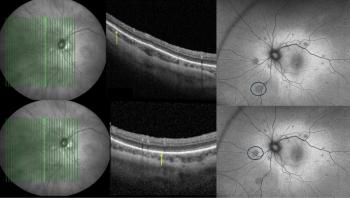
Canaloplasty 2-year clinical results published
Results of the evaluation of two-year post-surgical safety and efficacy of canaloplasty to treat open angle glaucoma (OAG) have been published in the Journal of Cataract and Refractive Surgery. Dr Richard A Lewis et al., concluded that the procedure was safe and effective in reducing IOP in adult OAG patients.
Results of the evaluation of two-year post-surgical safety and efficacy of canaloplasty (circumferential viscodilation and tensioning of the inner wall of Schlemm canal) to treat open angle glaucoma (OAG) have been published in the Journal of Cataract and Refractive Surgery. Dr Richard A Lewis et al., concluded that the procedure was safe and effective in reducing IOP in adult OAG patients.
One hundred and twenty seven patients took part in the clinical study and each patient was enrolled to have the canaloplasty procedure using a flexible microcatheter. At the end of two years the mean IOP of 16.0 mmHg ± 4.2 (SD) and the mean glaucoma medication use of 0.5 ± 0.8. Those eyes with canaloplasty alone were reported as have a mean IOP of 16.3 ± 3.7 mmHg and 0.6 ± 0.8 medications.
As Ophthalmology Times Europe reported as far back as 2006 when we spoke with head researcher, Dr Richard Lewis non-penetrating surgery is becoming more widely accepted in Europe: "I do not feel that uneasiness relating to a lack of knowledge or training is a significant obstacle or barrier to uptake as this unique approach appears far healthier and safer for the eye than trabeculectomy while providing better IOP control." Dr Lewis's results appear to bear out his statement. We will be talking to Dr Lewis in greater depth about the piece in the near future.
Newsletter
Get the essential updates shaping the future of pharma manufacturing and compliance—subscribe today to Pharmaceutical Technology and never miss a breakthrough.













































